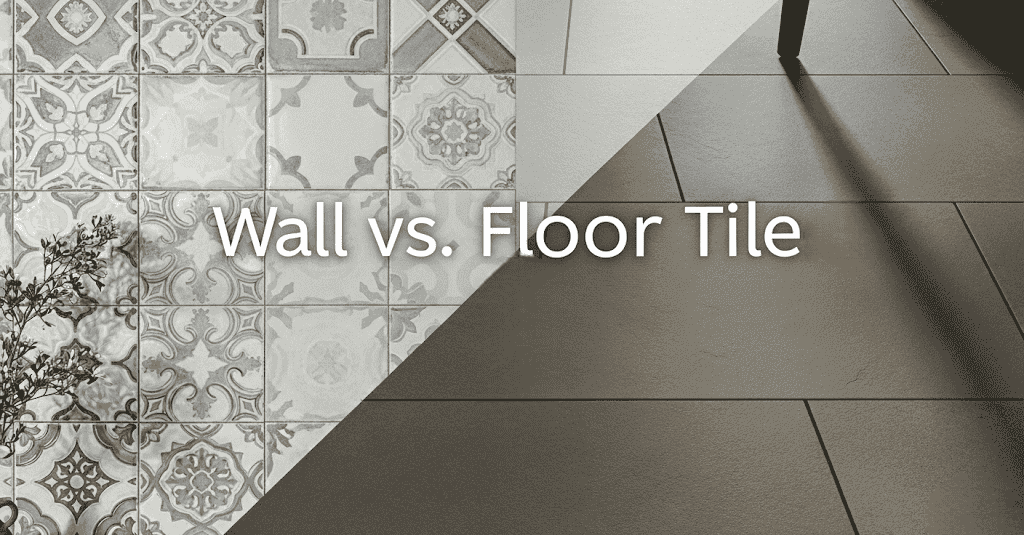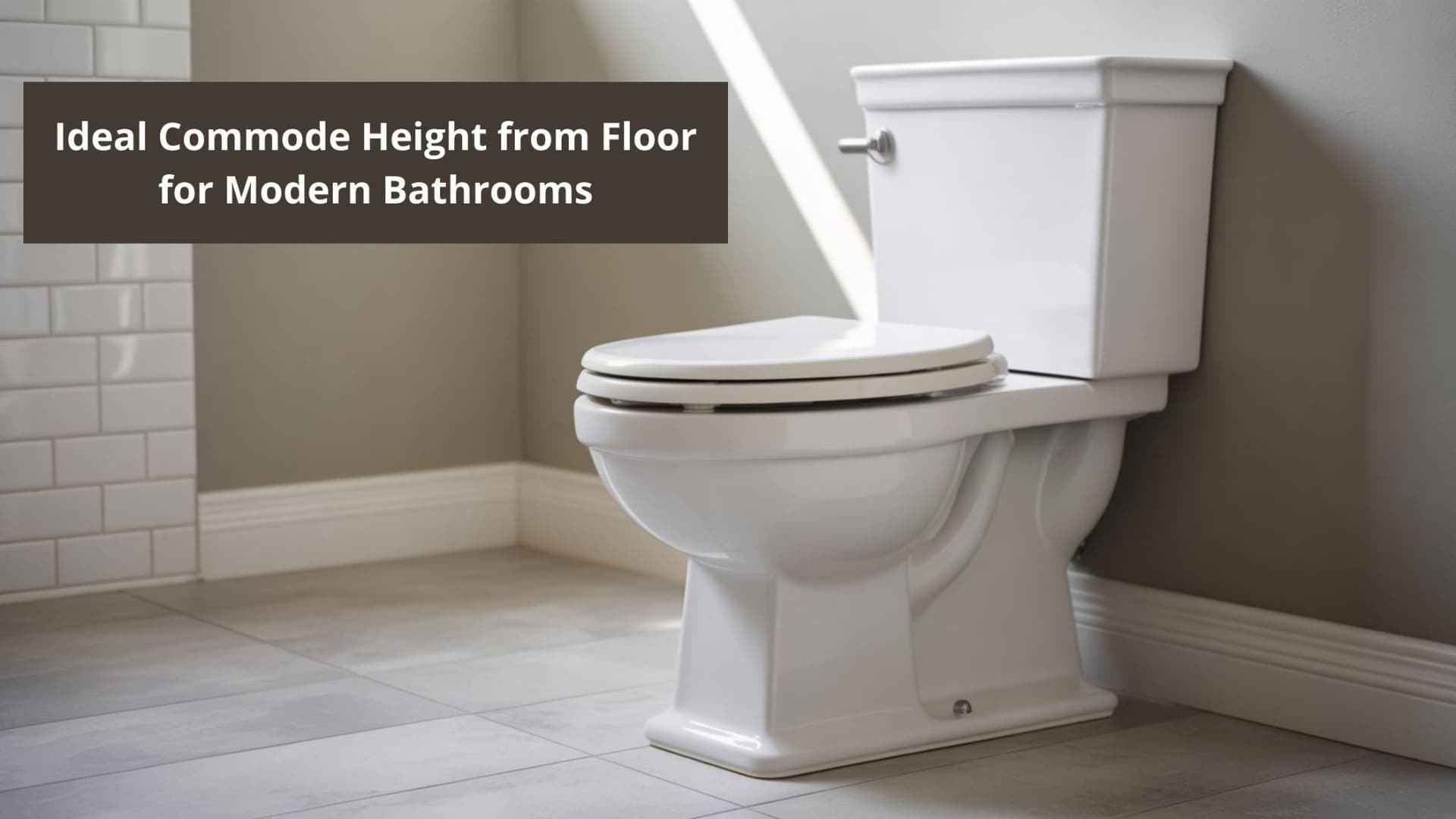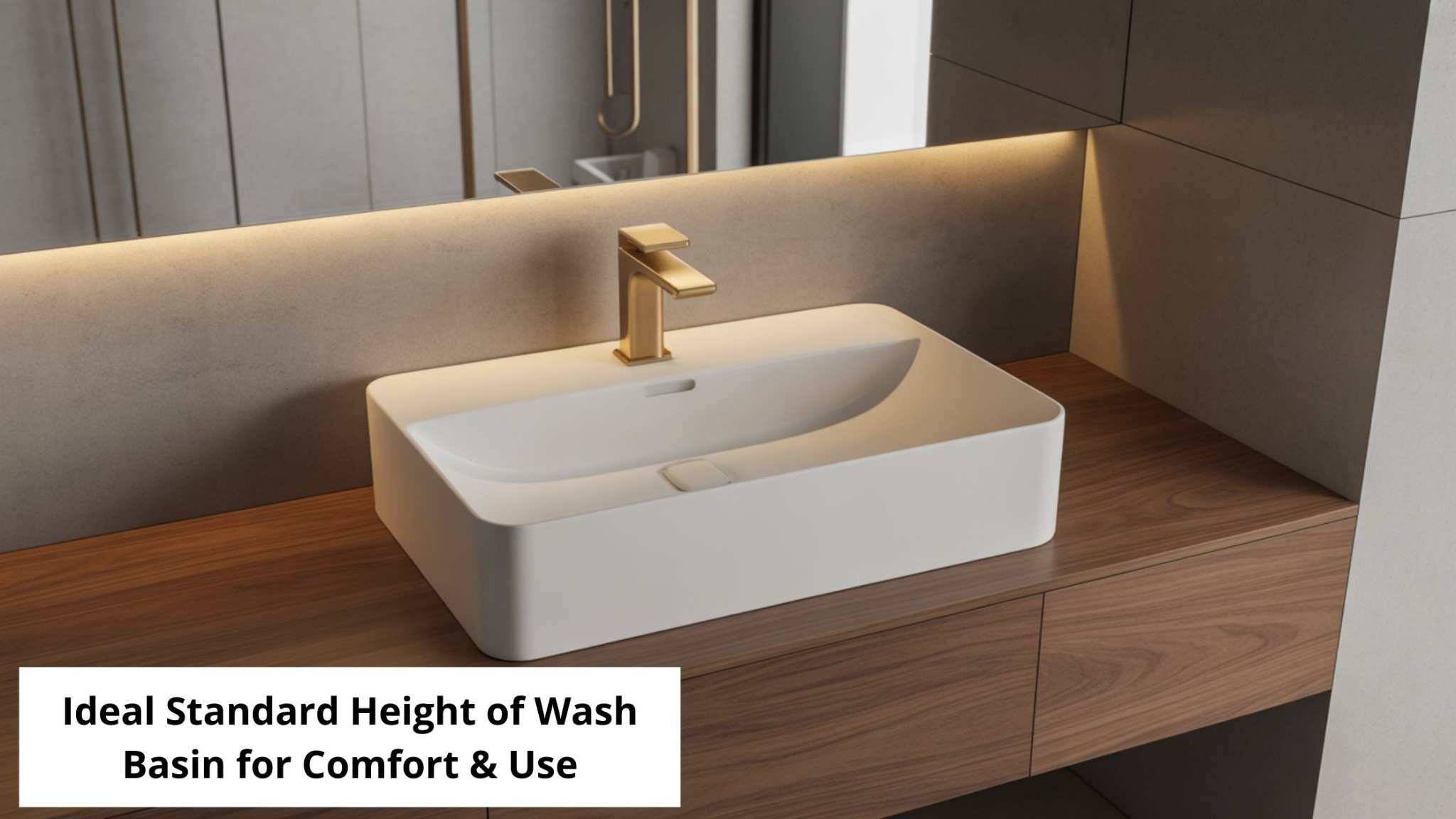Wall Tiles vs Floor Tiles – A Quick Comparison Guide

Choosing between wall vs floor tile is a crucial design decision, as the way they look and interact with each other also affects the way your space feels, functions, and holds up over the years. The right choice can make a room feel safer when you walk around barefoot, be easier to clean, and create a more visually balanced space. Floor tiles must withstand weight, movement, and daily wear. On the other hand, interior wall tiles mostly do not have to face a lot of the harshness, and so you can play with texture, pattern, and gloss with wall tiles in ways that you cannot with floors.
What Are Floor Tiles?
Floor tiles are specially designed to be stronger and more durable than wall tiles, making them ideal for areas with high foot traffic and heavy use. With a typical thickness ranging between 8 mm and 12 mm, they can withstand the weight of furniture, frequent cleaning, and the constant movement found in homes and commercial spaces.
The durability of floor tiles is measured using a PEI rating, which indicates how much wear a tile can handle—the higher the rating, the more suitable it is for busy areas. Slip resistance is another important factor, especially in homes with children or seniors. Tiles with higher grip, measured by the Coefficient of Friction (COF), are recommended for wet zones like bathrooms, patios, and balconies.
From polished and matte finishes to anti-skid textures, floor tiles offer both strength and style, making them perfect for living rooms, dining areas, kitchens, and outdoor spaces.
Also Read : Choose the perfect floor tile for your space
What Are Wall Tiles?
Wall tiles are lighter and thinner than floor tiles, typically ranging from 6 mm to 10 mm in thickness. Since they don’t need to bear weight or foot traffic, they are easier to cut and install on vertical surfaces. Their primary role is decorative, helping transform plain walls into stylish design features.
These tiles often come in glossy or satin finishes that reflect light, making rooms feel brighter and more spacious. Designs range from solid shades to intricate mosaics, textures, and even 3D effects, offering homeowners ample creative flexibility.
Wall tiles are also highly practical. In kitchens, they work well as splashbacks, protecting walls from oil, food stains, and steam. In bathrooms, they resist moisture and are easy to clean. Beyond utility, they are frequently used to create accent walls in living rooms or bedrooms, adding depth and character to interiors.
Also Read:Discover the Best Wall Tile Design Collection In India
Key Differences Between Floor Tile and Wall Tile
The difference between floor tile and wall tile goes beyond looks—it’s about function and strength. Floor tiles are designed to withstand weight and traffic, while wall tiles prioritise style, shine, and ease of installation.
|
Feature |
Floor Tiles |
Wall Tiles |
|
Durability and Strength |
They are thick, dense, and designed to handle foot traffic and heavy loads. |
Lightweight, not meant for load-bearing use. |
|
PEI Rating |
Higher PEI (3-5) for medium to heavy traffic. |
They have a lower PEI (1-3) due to the lack of foot traffic. |
|
Slip Resistance (COF) |
Higher COF for better grip, especially in wet zones. |
They come with lower COF, often glossy, and are meant for visual appeal. |
|
Size & Thickness |
These are usually thicker (8-12 mm) and available in large formats like 800×1600 mm. |
Thinner (6-10 mm), more suited for smaller or decorative formats. |
|
Design & Finish |
Matte, textured, or polished for both style and safety. |
Glossy, satin, and textured for decorative purposes. |
|
Manufacturing Process |
Denser clay mix, fired for high strength. |
A lighter clay mix, with a focus on surface finish and design detail. |
The difference between floor and wall tile isn’t just technical, but it can also change how the tile feels and performs in your home.
Can You Use Floor Tiles on Walls and Vice Versa?
You can install floor tiles on walls in most cases, but the reverse isn’t always true. Using floor tiles on walls, if the wall can support the weight, is common in commercial designs. This is especially true where large-format floor tiles are used in continuity to give a seamless look. However, installation requires proper wall preparation and strong adhesive.
Wall tiles, however, should never be used on floors. They simply aren’t made to withstand that kind of wear and tear, and using them on floors can lead to cracks or chips, which can eventually cause accidents. Plus, they are not slip-resistant. At Simpolo Tiles and Bathware, we recommend that you carefully review the guidelines before selecting the type of tile.
Applications and Maintenance Tips
Applications of Floor Tiles:
- Suitable for living rooms, dining areas, and bedrooms.
- Ideal for kitchens, pantries, and high-traffic corridors.
- Perfect for bathrooms, balconies, staircases, and outdoor patios.
Applications of Wall Tiles:
- Commonly used on bathroom walls and shower enclosures.
- Excellent for kitchen splashbacks to resist stains and moisture.
- Great for decorative feature walls in living rooms or bedrooms.
- Adds style to commercial spaces, such as reception areas and shop interiors.
Maintenance Tips:
- Sweep or vacuum regularly to remove dust and grit.
- Mop with warm water and mild detergent, avoid harsh chemical cleaners.
- Use soft brushes to clean grooves effectively on textured tiles.
- Do not drag heavy furniture across floor tiles to prevent scratches.
- Wipe spills immediately to avoid staining.
- For wall tiles, inspect and clean grout lines to prevent mould.
Keeping these practices in mind ensures you get the best performance from both, especially when comparing floor tile vs wall tile in everyday use.
Why Choose Simpolo Tiles for Wall and Floor Tiles?
At Simpolo Tiles and Bathware, we combine design innovation with unmatched quality. From premium vitrified tiles for modern spaces to elegant wall tiles, we can help you make the right choice for both residential and commercial projects.
Our Digital Showroom and Virtual Space Creator make it easy to visualise your chosen tiles in your own space. You can see 3D previews, experiment with colours and finishes, and even scan tiles with our Smart Code Technology to check them in 360 degrees. This makes it easier for you to be confident about your decisions without any guesswork.
FAQs on Wall vs. Floor Tiles
1. Why are wall tiles cheaper than floor tiles?
Wall tiles are lighter, thinner, and easier to produce than floor tiles, which are denser and made to handle heavy loads. This difference in the materials used, affecting their strength, usually makes wall tiles more affordable.
2. How do I identify if a tile is for floors or walls?
You can check the thickness, PEI rating, and slip resistance. Floor tiles are thicker with higher PEI and COF values. Wall tiles are designed to be lighter, allowing walls to hold them in place. They have lower ratings and often glossier finishes.
3. Are wall tiles water-resistant?
Yes, wall tiles resist moisture well, especially in areas such as bathrooms and kitchens. However, they should still be installed with proper waterproofing behind them in areas prone to wetness.
4. Can I use floor tiles on walls and vice versa?
Floor tiles can be installed on walls if the wall is capable of supporting the weight. Wall tiles should not be used on floors because they are not strong enough for foot traffic.







